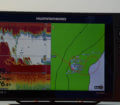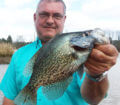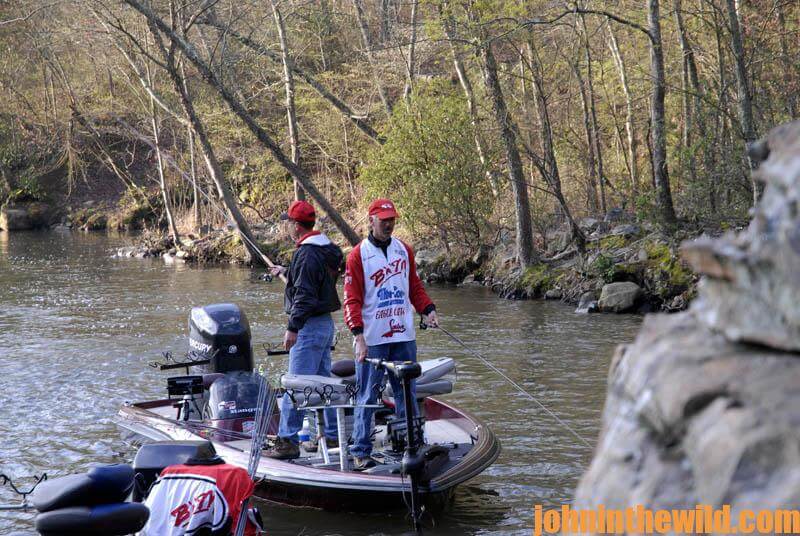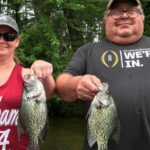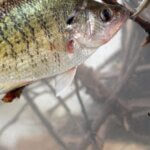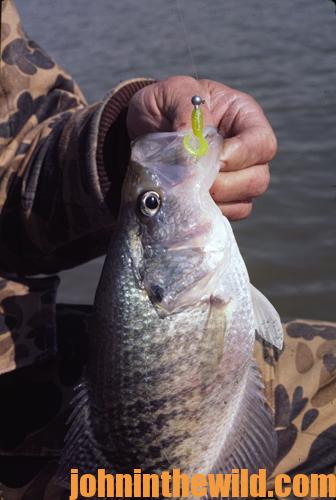 Editor’s Note: Are you tired of going fishing and not catching any crappie? Would you like to eliminate some of the guesswork from finding and taking crappie? Would you like to know the secret haunts and specialized techniques that will help you take speckled sides on every outing? Crappie-fishing guides and tournament crappie pros must find and take papermouths every day they’re on the water. They’ve unlocked many of the mysteries crappie have held beneath the surface for years, and this week we’re covering some of their most-productive tactics.
Editor’s Note: Are you tired of going fishing and not catching any crappie? Would you like to eliminate some of the guesswork from finding and taking crappie? Would you like to know the secret haunts and specialized techniques that will help you take speckled sides on every outing? Crappie-fishing guides and tournament crappie pros must find and take papermouths every day they’re on the water. They’ve unlocked many of the mysteries crappie have held beneath the surface for years, and this week we’re covering some of their most-productive tactics.
Learn to Work Cover:
Yet another critical factor in finding and taking crappie is your ability to effectively work cover. On many days, especially in the spring and summer, crappie will be holding tight to the cover. The way you present the bait to those fish determines whether or not you’ll catch them. If you’re using heavy lines, heavy sinkers and big corks, often you’ll get hung-up in the cover and either break off the line or shake the underwater bush, which will disturb the crappie holding there. That’s why many crappiers fish with light line and a graphite pole, since the sensitivity of the pole is the key to being able to feel the structure and work the bait properly.
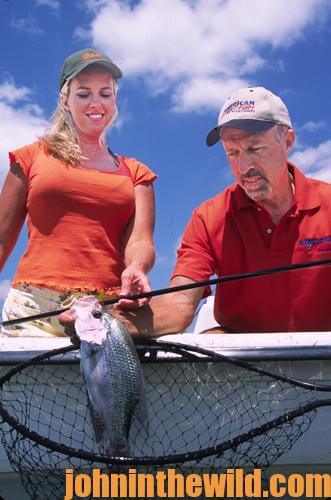 By using a crappie pole with a light tip, many crappie fishermen say you actually can tell which way a limb is running under the water and work your jig immediately on top of that limb with a tight line. You can bounce the jig along the top of the limb to resemble a feeding baitfish. By being able to tap the cover with the jig, you can tantalize the crappie into biting. Having sensitivity in the pole and the line means you can feel every twig and limb under the surface, which means you won’t get hung up as often. Oftentimes crappie fishermen won’t put their baits where crappie are in thick cover, because they fear becoming hung. However, if you can feel that jig working through those limbs, you can make the papermouths bite without hanging up in the cover.
By using a crappie pole with a light tip, many crappie fishermen say you actually can tell which way a limb is running under the water and work your jig immediately on top of that limb with a tight line. You can bounce the jig along the top of the limb to resemble a feeding baitfish. By being able to tap the cover with the jig, you can tantalize the crappie into biting. Having sensitivity in the pole and the line means you can feel every twig and limb under the surface, which means you won’t get hung up as often. Oftentimes crappie fishermen won’t put their baits where crappie are in thick cover, because they fear becoming hung. However, if you can feel that jig working through those limbs, you can make the papermouths bite without hanging up in the cover.
Know the Most-Productive Places to Fish for Crappie:
To find the most and the biggest crappie on any lake, many anglers have learned to fish the creeks in the center of the lake. Most anglers believe the upper end of a lake warms up before the lower end of a lake does, and that the lower end of a lake usually is clearer than the upper end of a lake. But generally the water temperature in the middle of the lake is the most stable, and often some kind of stain is in the water in that region of a lake. Because the middle of a lake experiences less change than other parts of a lake, many crappie anglers believe crappie are more stable in the middle of a lake, grow quicker and are less affected by water and weather conditions than in any other section of a lake.
 Identify Crappie Highways:
Identify Crappie Highways:
Next, you need to look for the proper water depth in the creeks in the middle of a lake. Start off searching for a creek that has a mouth about 30-feet deep. Locate creek channels that drop off from 10 – 18 feet deep, which will be natural highways for the crappie to use. During the spawn and in warm weather, the crappie can move into the shallow water to spawn and then swim back to that 10 – 18 foot water when a cold front hits, or when the fish have completed spawning. These kinds of creeks are ones baitfish like to travel also.
Another critical ingredient for successful crappie fishing is to choose a creek with the most underwater bends in its creek channel. Crappie generally will hold on the outside bends of these underwater creek channels, which is an example of the type of pattern to pinpoint.
Some fishermen prefer to fish in the middles of the creeks on these creek channels and bends because most people don’t fish in those regions. Most crappie fishermen hunt cover around the bank and fish the cover related to the bank. Consequently bank-bound crappie will be harvested the heaviest. Also the chances of your catching a big crappie aren’t nearly as good close to a bank, since so-many people are fishing that area. However, when you fish the underwater structure out in the middle of a creek where the underwater creek channels are, you’ll usually catch more and bigger crappie.
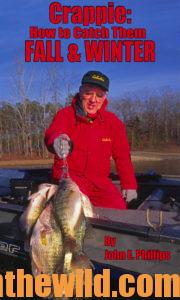 To learn more about crappie fishing, check out John E. Phillips’ book, “Crappie – How to Catch Them Fall and Winter,” available in Kindle and print versions at http://amzn.to/16AzIZi.
To learn more about crappie fishing, check out John E. Phillips’ book, “Crappie – How to Catch Them Fall and Winter,” available in Kindle and print versions at http://amzn.to/16AzIZi.

